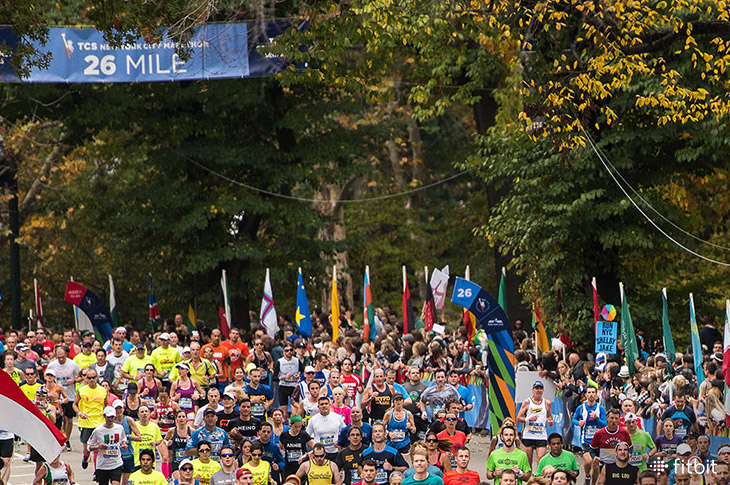
Watching thousands of runners complete a marathon—and seeing your friends and colleagues brag about their 26.2-mile conquests on social media—can be completely inspiring. It’s easy to understand if you catch the bug yourself. But where do you start? The multi-mile distance can seem daunting to anyone, but as your friends and colleagues can attest: It’s completely doable. Here’s how to cross that starting line in five easy steps.
1) Think Long Term
Now is the time to start if you want to run a marathon next spring, or even a year from now. “So many people sign up and think they can do it tomorrow, or this month,” says Jeff Gaudette, former elite athlete and owner/head coach of Runner’s Connect. “They think they can just gut through it—but with a marathon, that can get ugly.” In other words, you’ll have a nicer experience (and avoid injuries) if you take the time to prep.
2) Build Strength
Gaudette suggests focusing on strengthening key areas, to form a solid foundation for your training. “Start with a core- and hip-strengthening protocol to make sure your structural system is ready to handle an increase in running,” Gaudette says. These involve simple stretching and body-weight exercises like walking lunges and planks, at least twice per week for six weeks. It’s also a good idea to add some short, all-out bursts to your runs, to improve your stride. You’ll learn how to pace yourself for the long haul.
3) Take it Slow
“Keep your runs easy,” Gaudette says. “You’re going to get much better value training for the marathon by running slow—staying in your fat-burning or low-end cardio zones—than if you get into your peak zone.” You’ll be able to have more energy for more mileage.
Aim to run three times to five times per week, for about 30 minutes each session, or two to three miles per run. On one day per week—go long, up to double your normal daily distance. Most importantly, Gaudette says, “Keep your pace slow—for all of your runs. You want to establish an aerobic base, and give your body the best chance to adapt to an increase in mileage.”
4) Bump Up Mileage…Gradually
As you get comfortable running three to five times per week, start to gradually increase your miles. Gaudette suggests increasing your overall weekly distance by 10%, adding a bit to each run. That means, if your week adds up to 10 miles, bump your overall mileage goal to 11 miles for the next week. Working slowly like this will help your body adapt, so you can prevent injuries and also feel more comfortable during your runs.
5) Slip in Some Speed
Once you get to 20 miles per week, make sure at least one day includes up-tempo running, to practice running slightly harder than your regular pace. It will help you learn to push yourself when needed, and can make a long run feel easier. Gaudette recommends starting with two to three miles at an up-tempo pace once a week, with an easy mile before and after to warm-up and cool down. Increase your distance on up-tempo days by one mile, every other week, until you reach an 8-mile up-tempo run. At this point, you should be ready for a marathon.
This information is for educational purposes only and is not intended as a substitute for medical diagnosis or treatment. You should not use this information to diagnose or treat a health problem or condition. Always check with your doctor before changing your diet, altering your sleep habits, taking supplements, or starting a new fitness routine.

Should I do these steps if the marathon is only 5 kilometres Is there a difference in the distances for your specific training regimen?
HI Christian: This article is specifically addressing the marathon (26.2 miles). The basic advice is sound for any distance, but you need not go quite as long and you’ll want more speed work if your goal is to run the 5K fast. See “Why Everyone Should Run the 5K” in this blog for more specific advice on 5K training. Jonathan
[…] Next: 5 Steps to Running Your First Marathon […]
What fitbit would be the most appropriate to wear when running a marathon?